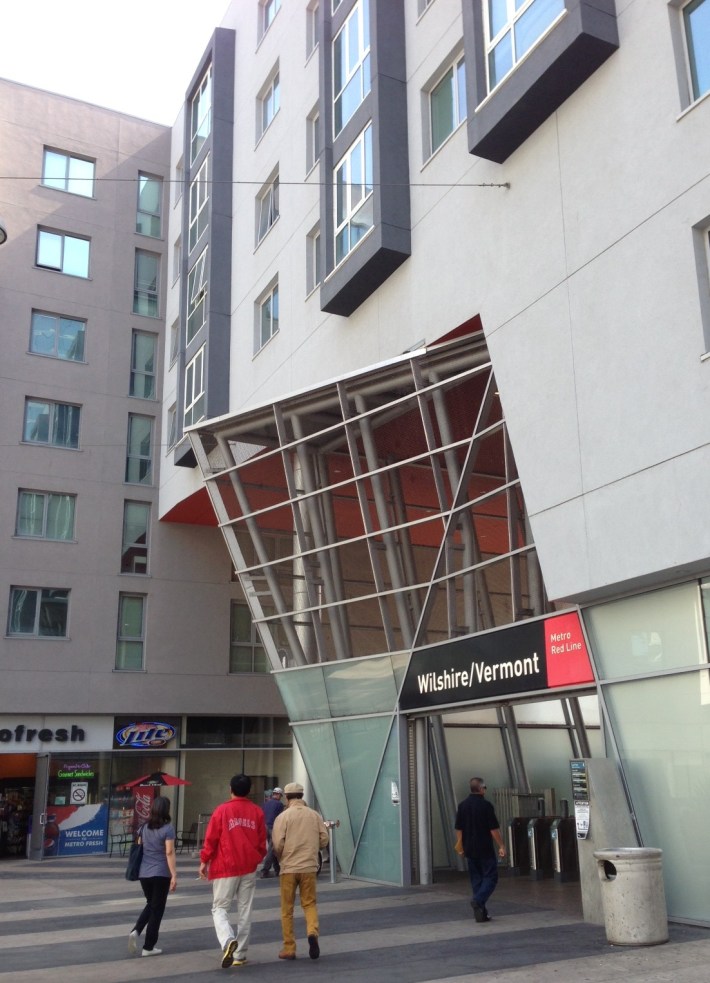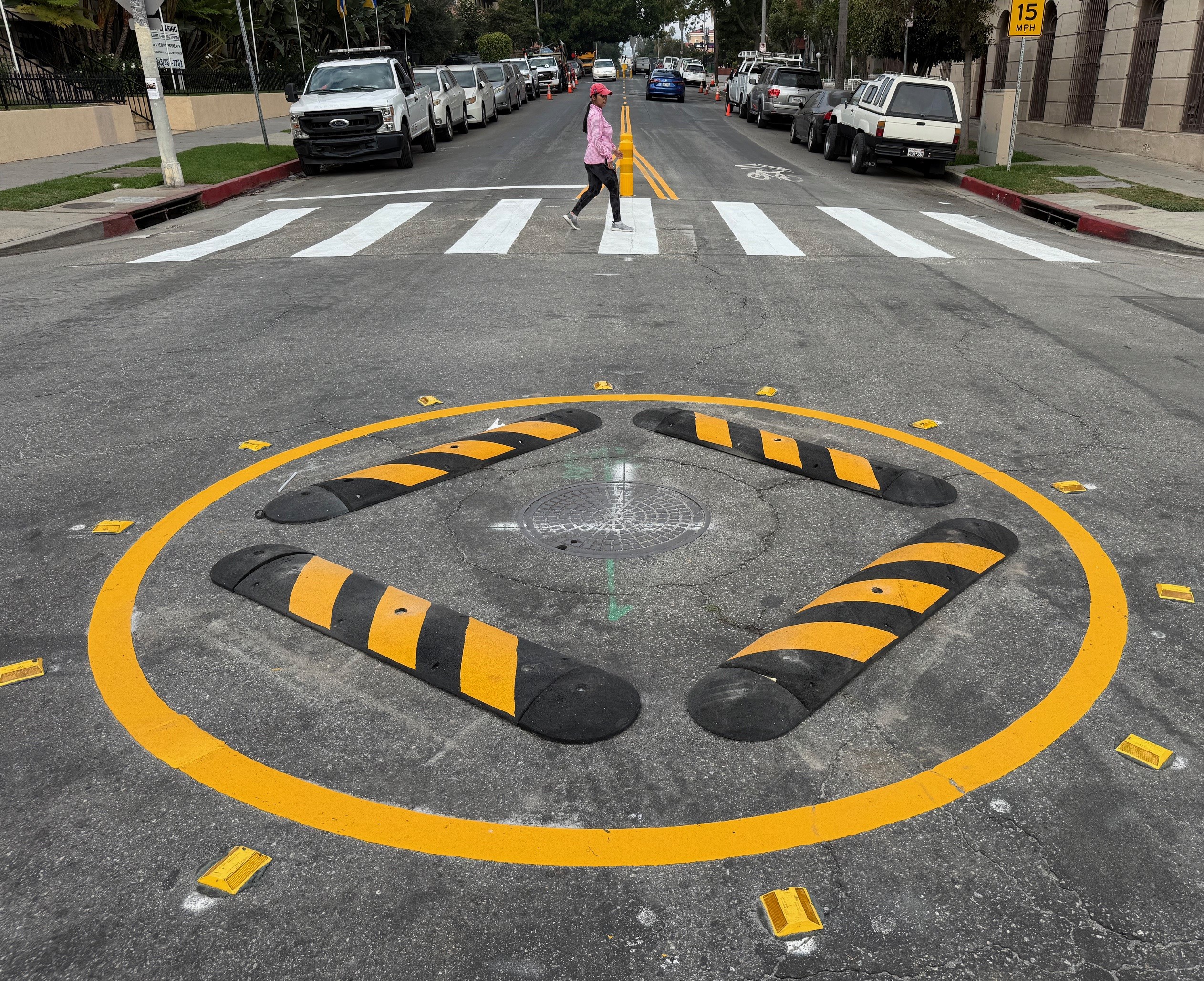
Earlier today, the Metro board of directors passed a motion [PDF] encouraging Transit-Oriented Development (TOD) and affordable housing.
The motion may give some indication of where the board's newest chair, Los Angeles Mayor Eric Garcetti, hopes to take the agency. Garcetti has been a vocal proponent of siting affordable housing along transit lines. Garcetti authored the motion and shepherded its passage in the face of concerns expressed by other Metro boardmembers.
The motion helps Metro to play a greater role in fostering affordable housing at its rail stations and along its transit corridors. There are six components to the motion; the agency will: (full text in this PDF)
- Inventory current and potential future joint development sites along Metro's Gold, Expo, Crenshaw/LAX, Regional Connector, and Purple Lines.
- Partner with local cities and L.A. County to work together to invest in transit corridor sites, potentially leveraging municipal housing funding.
- Set a goal that a minimum 30 percent of Metro's jointly-developed housing will be affordable housing.
- Allow property value discounts to incentivize affordability.
- Collaborate on the creation of a Countywide Transit Oriented Affordable Housing (TOAH) loan fund.
- Establish a TAP purchase program for residents of joint development housing.
The motion directs Metro CEO Art Leahy to report to the board in February 2015 with a preliminary assessment of the above. From its preamble, the motion readies Metro to support the region in taking advantage of new State of California programs that will grant cap-and-trade funds to promote Affordable Housing and Sustainable Communities (AHSC.)
The motion was approved at last week's executive committee meeting, so it could have sailed through this morning without debate. Boardmember Diane DuBois removed the item from the meeting's consent calendar. Though DuBois ultimately voted in favor of the motion, she offered a long list of concerns, including: Metro shouldn't "dictate" affordable housing goals, Metro doesn't have authority over land use, affordability targets will discourage development, existing TAP outlets are sufficient, and affordable joint development is "diverting transit dollars."
Overall, Dubois' comments encouraged Metro to tightly focus on its mission to provide transit, hence joint development would merely "generate value" that the agency can use to fund transit.
The motion was then defended by its co-authors, Garcetti, Supervisor Mark Ridley-Thomas, and Garcetti-appointees Jacquelyn Dupont-Walker and Mike Bonin. Garcetti cited a recent report showed that L.A. City has the least affordable rental housing market in the nation.
Councilmember Bonin stressed that Metro does have significant influence over development, and that it was a "moral imperative" to play a role in addressing the great need for affordable housing. Overall, Garcetti and these co-authors affirmed that Metro's mission does extend beyond the strict boundaries of its stations, and that the agency plays a big role in the quality of life in transit-adjacent communities.
The motion was amended to explicitly seek to dovetail with CA AHSC programs, and to include cost estimates. The amended motion passed unanimously.
As it constructs rail lines, Metro purchases land for stations, and also for construction activities. For an up-to-the-minute example, see the six Metro-owned Boyle Heights sites (map) currently proposed for joint development, and the ensuing controversies. Metro displaced existing uses, often affordable housing, theoretically for the greater transportation good. What Metro ultimately does with its property shapes the neighborhoods around its stations, and shapes the way Metro's transit systems operate.
Many governmental policy motions, at Metro and elsewhere, can result in little or no results. Garcetti, at the outset of a presumably-long tenure on the Metro board and as its current chair, is in a great position to ensure that this policy directive actually results in on-the-ground affordable transit-oriented housing.
Metro staff is due to report back on Metro affordable housing sites early next year. Streetsblog will report back when they do.





